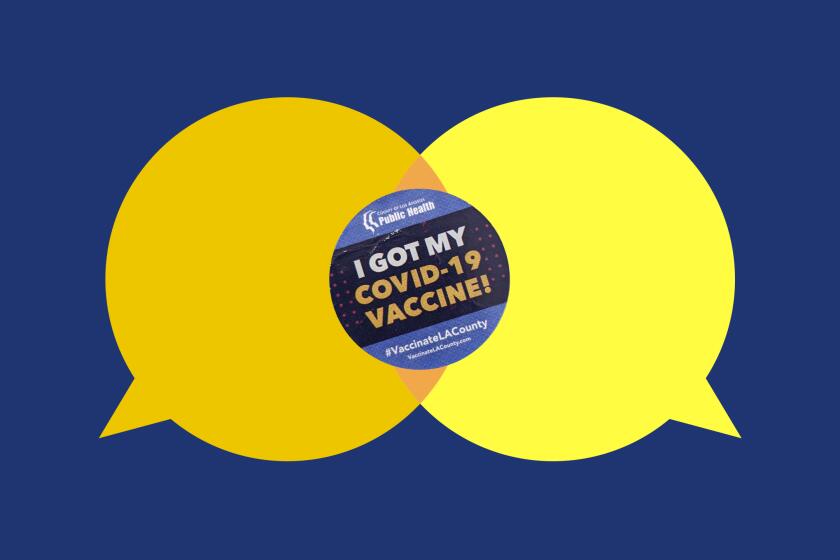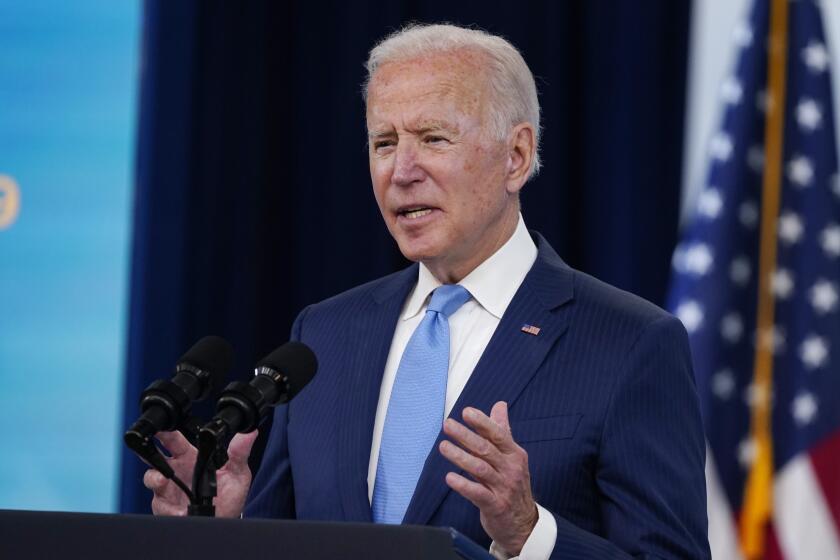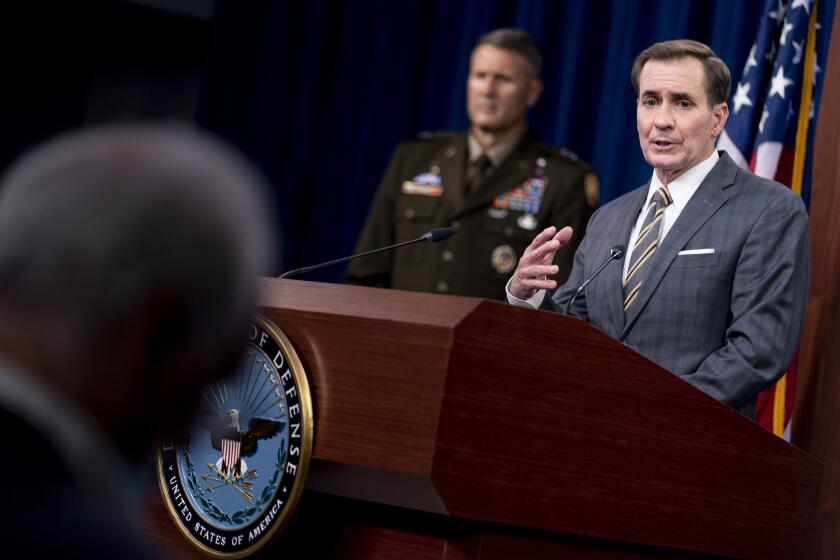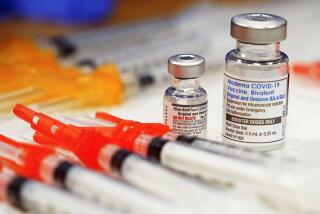The FDA granted full approval for the Pfizer vaccine. What does that mean?
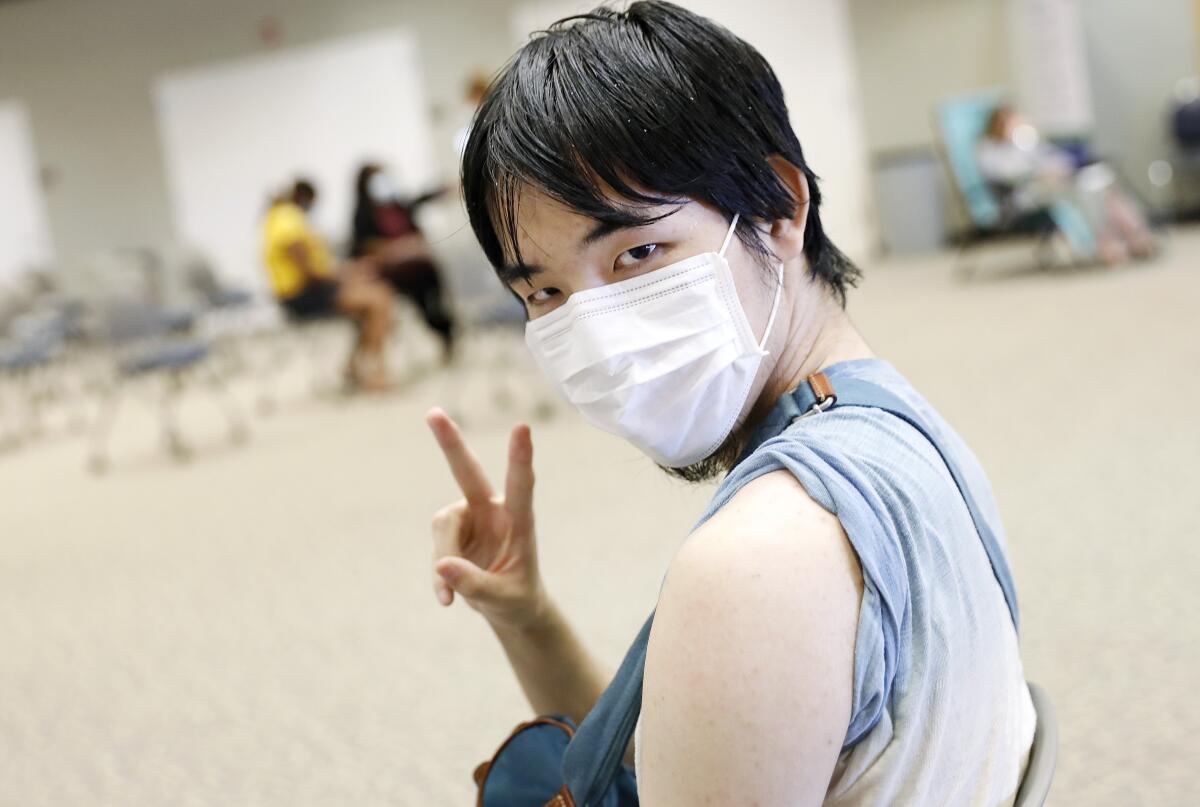
- Share via
In a milestone for the battle against pandemic, the Food and Drug Administration granted full approval Monday to the Pfizer-BioNTech COVID-19 vaccine.
“While this and other vaccines have met the FDA’s rigorous, scientific standards for emergency use authorization, as the first FDA-approved COVID-19 vaccine, the public can be very confident that this vaccine meets the high standards for safety, effectiveness, and manufacturing quality the FDA requires of an approved product,” said the acting FDA commissioner, Dr. Janet Woodcock.
More evidence was available about the Pfizer vaccine than any other shot the FDA has ever evaluated. In the United States, more than 200 million doses have gone into arms, and hundreds of millions more doses have been delivered around the world. The evidence is overwhelming: The Pfizer vaccine is safe and effective. And now, it carries the strongest possible endorsement from the FDA.
Those doses were administered in the U.S. under emergency use authorization. How is that different from full approval, and what extra testing and reviews have been done since then?
Here’s a closer look at what goes into the FDA approval process.
You want them to get vaccinated. They don’t. Now what? Tips from experts to have a conversation that could possibly change their mind.
What does FDA full approval mean, and how is it different from emergency use authorization?
Typically, new drugs have to receive full approval from the FDA before patients can get them from their doctors. But under special circumstances — for instance, a pandemic killing millions worldwide and overwhelming hospitals with patients on ventilators — the FDA can grant emergency use authorization to fast-track a medication to the public. It doesn’t mean the vaccine was still considered “experimental” or that it was untested, however.
Drugs that are granted emergency authorization must already have gone through multiple rounds of clinical trials, which the Pfizer, Moderna, and Johnson & Johnson vaccines all had done. Phase 1 trials involve giving the vaccine to a small number of healthy people at gradually increasing dosages. If it is deemed safe and well-tolerated, the vaccine moves to Phase 2, which involves more subjects at varying levels of health trying different dosages. Phase 2 is also when the drug is tested against a placebo.
If Phase 2 proves successful, the drug moves to Phase 3. Thousands of volunteer subjects at different health levels are assigned to take either the drug or a placebo, and the people running the trial see how many people in either group end up getting infected. The effectiveness of the vaccine is determined by comparing the infection rate for the group that received the placebo to the rate in the group that received the vaccine.
In order to be a candidate for an emergency authorization, a Phase 3 vaccine trial should have more than 3,000 participants, and at least half of them should be tracked for two months after receiving the final dose. (The two-month period represents the time in which any potential long-term effects are likely to be identified.) The three vaccines approved in the U.S. met these criteria. Phases 2 and 3 of the Pfizer trial had more than 40,000 participants. You can read the outcomes of those trials in Pfizer’s emergency authorization submission posted by the FDA.
FDA’s approval of the Pfizer COVID-19 vaccine comes at a key time for Biden, with Americans growing disenchanted with his handling of the pandemic.
So that’s the path to emergency authorization, which Pfizer received in December. Since then, per the standard FDA approval process, the drug maker has kept track of any serious side effects, particularly hospitalizations and deaths. The FDA also has sought to determine how much of the drug could be made safely, touring the factories and deciding which tests needed to be performed to make sure all doses met quality standards.
When a drug maker is ready to be considered for full approval, it submits a biologics license application that includes preclinical, clinical and manufacturing data. The standard of review for this application is higher than for an emergency authorization. For emergency use, a company can submit data from a clinical trial that is still in progress; for full approval, the clinical trials must be complete and the company has to include periodic safety reports and distribution records. A drug that has emergency use authorization can be used only while the public health emergency is still in effect. With full approval, the drug can be manufactured and distributed indefinitely.
The application from Pfizer included updated data from the existing clinical trials and a longer-term follow-up observing a larger clinical trial population. There was also an evaluation of reports of post-vaccination myocarditis and pericarditis in some recipients.
The CDC and the FDA said in a statement that both agencies will continue to monitor the drug’s safety and any reports of side effects.
“Our scientific and medical experts conducted an incredibly thorough and thoughtful evaluation of this vaccine. We evaluated scientific data and information included in hundreds of thousands of pages, conducted our own analyses of [the Pfizer vaccine’s] safety and effectiveness, and performed a detailed assessment of the manufacturing processes, including inspections of the manufacturing facilities,” said Peter Marks, the director of the FDA’s Center for Biologics Evaluation and Research, in a statement.
In sum, full approval means the FDA considers a drug safe and effective at the prescribed dosage for the intended population, and that the maker of the drug is able to safely produce enough of it. The full approval process includes the data that was submitted for emergency use authorization, plus additional information from drug trials and manufacturing facilities. The CDC has posted a detailed breakdown of what goes into the development and approval process.
What does this mean for me?
Employers, retailers and venue operators could have required that their workers and customers be vaccinated under the emergency use authorization, but some held off, awaiting full approval. If your employer or school didn’t already mandate that you get vaccinated, it’s more likely to happen now.
President Biden called on private businesses, nonprofits and local government leaders to require employees to get vaccinated. “Do what I did last month,” he said, referring to the vaccine mandate imposed on White House staff in July. On the heels of the FDA announcement, the Pentagon said it would be mandating the shots for members of America’s military.
The majority of Americans support vaccine mandates, according to a recent Morning Consult/Politico poll. The group most likely to oppose them are Republicans, who, polling data indicate, are also the largest group of unvaccinated people.
The Pentagon says it will require service members to receive the COVID-19 vaccine now that the Pfizer vaccine has received full FDA approval.
Scientists hoped granting the vaccine full approval could put some holdouts’ fears to rest. The Pfizer vaccine now has the highest possible seal of approval from the nation’s highest authority on drug safety. Yes, a small percentage of vaccinated people have caught COVID. No expert is surprised by that. No vaccine is 100% effective at preventing infection, transmission, hospitalization or death. But even with the Delta strain, if you’re vaccinated, you’re less likely to catch COVID; if you do catch it, you’re less likely to need to be hospitalized for it; if you do need to be hospitalized for it, you’re less likely to die of it. That’s why this has been called a “pandemic of the unvaccinated”: The vast majority of people in the hospital with and dying of COVID right now are not vaccinated.
Think of getting vaccinated like wearing your seat belt in your car or your helmet on your bike: They aren’t guarantees, but you’ll feel — and be, statistically — a lot safer.
